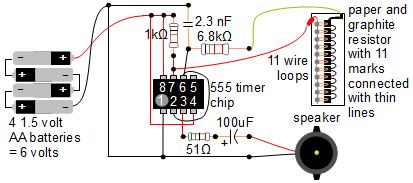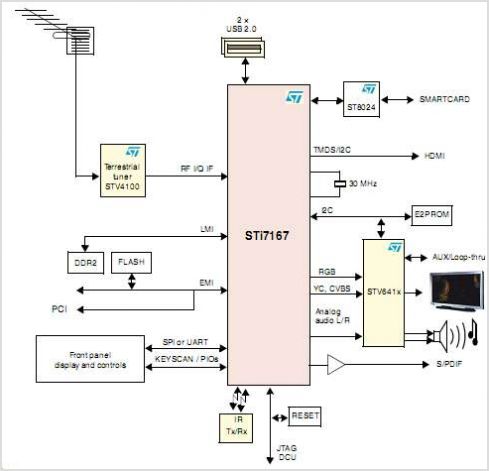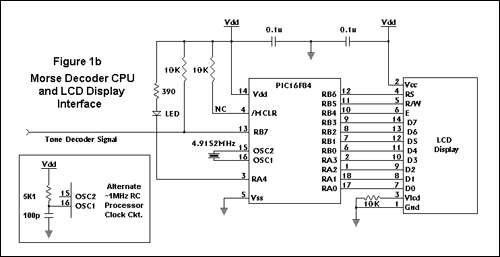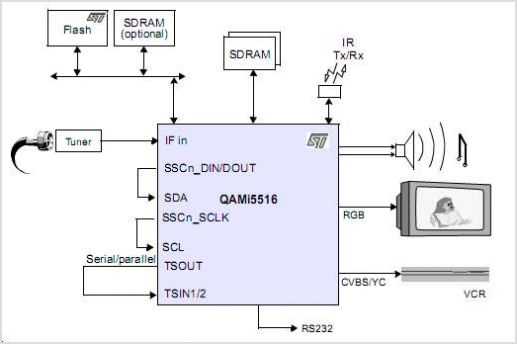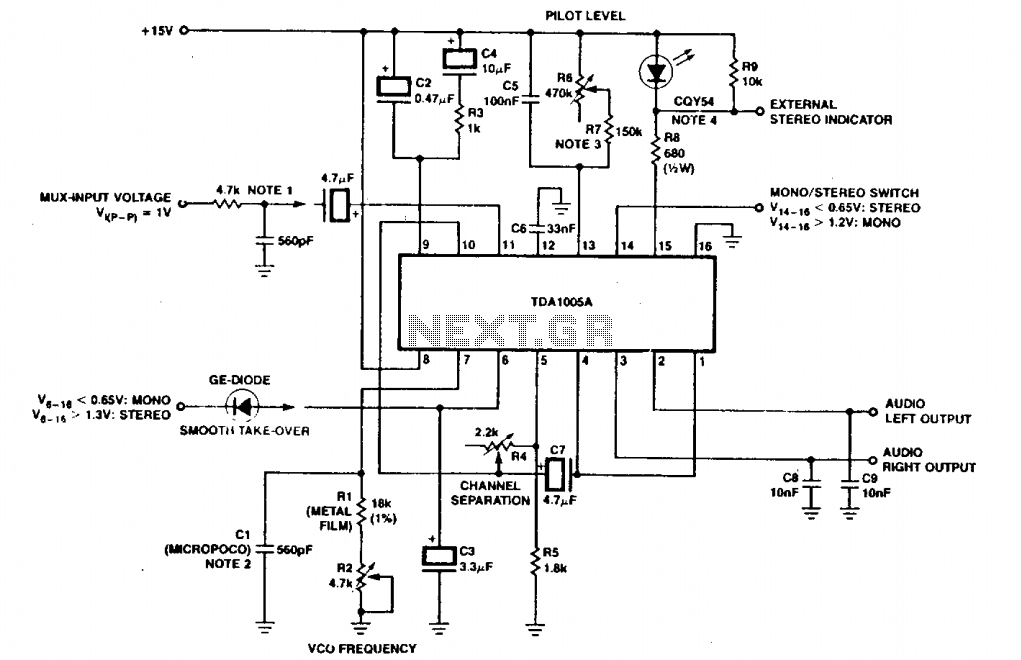
Background music decoder
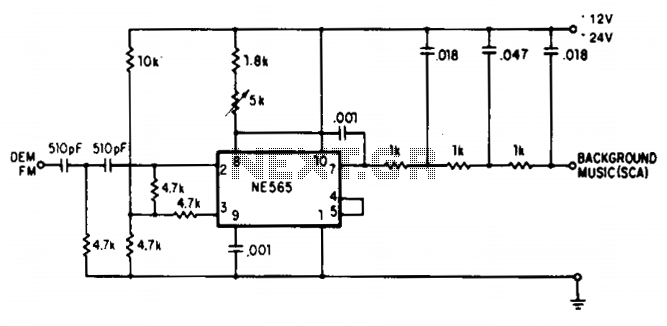
A resistive voltage divider is utilized to establish a bias voltage for the input pins (Pins 2 and 3). The demodulated frequency modulation (FM) signal is introduced to the input via a two-stage high-pass filter, which serves to provide capacitive coupling and reduce the strength of the regular channel signal. The required total signal amplitude at the input ranges from 80 mV to 300 mV, with the source impedance needing to be less than 10,000 ohms. The Phase-Locked Loop (PLL) is adjusted to 67 kHz using a 5000-ohm potentiometer, where only approximate tuning is necessary, as the loop will automatically lock onto the signal. The demodulated output from Pin 7 is then processed through a three-stage low-pass filter to achieve de-emphasis and to diminish high-frequency noise typically associated with Subcarrier Audio (SCA) transmission. It is important to note that there is no capacitor directly connected to Pin 7, indicating that the circuit operates as a first-order loop. The output signal after demodulation is approximately 50 mV, with a frequency response that extends up to 7 kHz.
In this circuit setup, the resistive voltage divider plays a critical role in establishing a stable bias voltage for the input pins, ensuring that the signal levels are appropriate for processing. The two-stage high-pass filter is crucial in preventing low-frequency signals from saturating the input stage while also allowing higher frequency signals to pass through with minimal attenuation. This filter is typically composed of capacitors and resistors configured to form a passband that effectively blocks frequencies below a certain threshold.
The Phase-Locked Loop (PLL) is an essential component in this circuit, allowing for the locking onto the desired frequency of 67 kHz. The use of a 5000-ohm potentiometer facilitates fine-tuning of the PLL, enhancing the circuit's ability to track the input signal accurately. The automatic seeking capability of the PLL ensures that even with slight variations in frequency, the circuit maintains synchronization with the incoming FM signal.
The subsequent three-stage low-pass filter connected to Pin 7 is designed to mitigate high-frequency noise that can interfere with the clarity of the demodulated audio signal. This filter typically consists of multiple RC networks that progressively reduce the amplitude of frequencies above the desired audio range, effectively providing a cleaner output for further processing or amplification.
The absence of a capacitor at Pin 7 indicates a simplified first-order filtering approach, which may be sufficient for certain applications, particularly where space or component count is a concern. The output signal level of approximately 50 mV, combined with a frequency response extending to 7 kHz, suggests that the circuit is well-suited for audio applications where fidelity and noise reduction are important. This design offers a balance between performance and complexity, making it a viable solution for FM demodulation tasks in various electronic systems.A resistive voltage divider is used to establish a bias voltage for the input (Pins 2 and 3). The demodulated (multiplex) FM signal is fed to the input through a two-stage high-pass filter, both to effect capacitive coupling and to attenuate the strong signal of the regular channel. A total signal amplitude, between 80 mV and 300 mV, is required at the input. Its source should have an impedance of less than 10,000 ohm. The Phase-Locked Loop is tuned to 67 kHz with a 5000 ohm potentiometer, only approximate tuning is required since the loop will seek the signal.
The demodulated output (Pin 7) passes through a three-stage low-pass filter to provide de-emphasis and attenuate the high-frequency noise which often accompanies SCA transmission. Note that no capacitor is provided directly at Pin 7; thus, the circuit is operating as a first-order loop. The demodulated output signal is in the order of 50 mV and the frequency response extends to 7 kHz.
In this circuit setup, the resistive voltage divider plays a critical role in establishing a stable bias voltage for the input pins, ensuring that the signal levels are appropriate for processing. The two-stage high-pass filter is crucial in preventing low-frequency signals from saturating the input stage while also allowing higher frequency signals to pass through with minimal attenuation. This filter is typically composed of capacitors and resistors configured to form a passband that effectively blocks frequencies below a certain threshold.
The Phase-Locked Loop (PLL) is an essential component in this circuit, allowing for the locking onto the desired frequency of 67 kHz. The use of a 5000-ohm potentiometer facilitates fine-tuning of the PLL, enhancing the circuit's ability to track the input signal accurately. The automatic seeking capability of the PLL ensures that even with slight variations in frequency, the circuit maintains synchronization with the incoming FM signal.
The subsequent three-stage low-pass filter connected to Pin 7 is designed to mitigate high-frequency noise that can interfere with the clarity of the demodulated audio signal. This filter typically consists of multiple RC networks that progressively reduce the amplitude of frequencies above the desired audio range, effectively providing a cleaner output for further processing or amplification.
The absence of a capacitor at Pin 7 indicates a simplified first-order filtering approach, which may be sufficient for certain applications, particularly where space or component count is a concern. The output signal level of approximately 50 mV, combined with a frequency response extending to 7 kHz, suggests that the circuit is well-suited for audio applications where fidelity and noise reduction are important. This design offers a balance between performance and complexity, making it a viable solution for FM demodulation tasks in various electronic systems.A resistive voltage divider is used to establish a bias voltage for the input (Pins 2 and 3). The demodulated (multiplex) FM signal is fed to the input through a two-stage high-pass filter, both to effect capacitive coupling and to attenuate the strong signal of the regular channel. A total signal amplitude, between 80 mV and 300 mV, is required at the input. Its source should have an impedance of less than 10,000 ohm. The Phase-Locked Loop is tuned to 67 kHz with a 5000 ohm potentiometer, only approximate tuning is required since the loop will seek the signal.
The demodulated output (Pin 7) passes through a three-stage low-pass filter to provide de-emphasis and attenuate the high-frequency noise which often accompanies SCA transmission. Note that no capacitor is provided directly at Pin 7; thus, the circuit is operating as a first-order loop. The demodulated output signal is in the order of 50 mV and the frequency response extends to 7 kHz.
